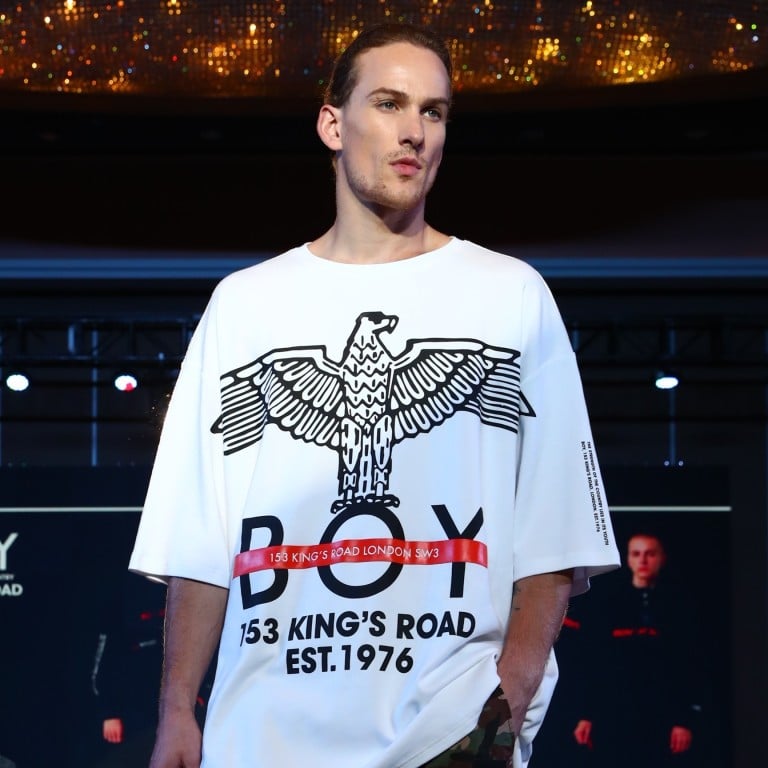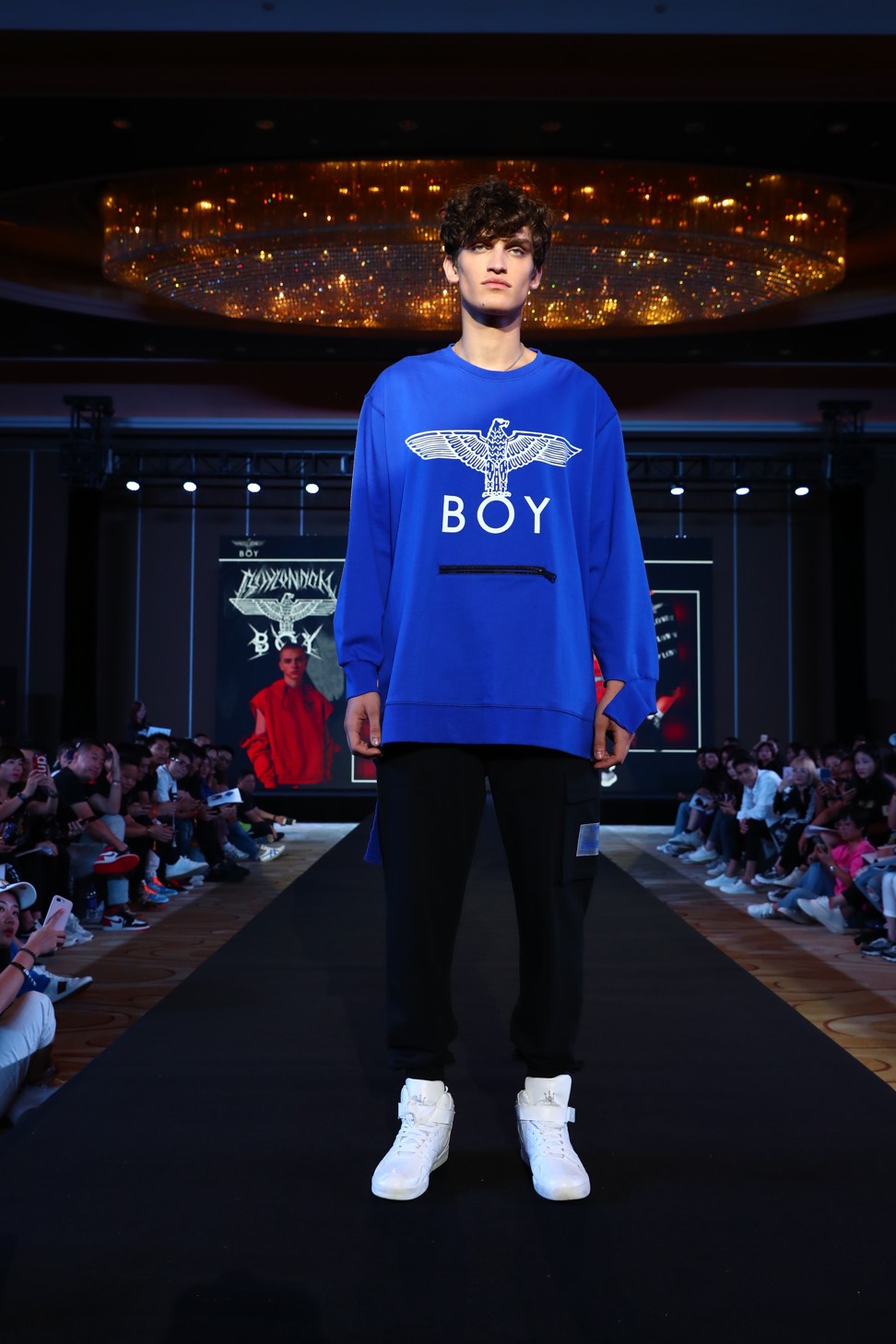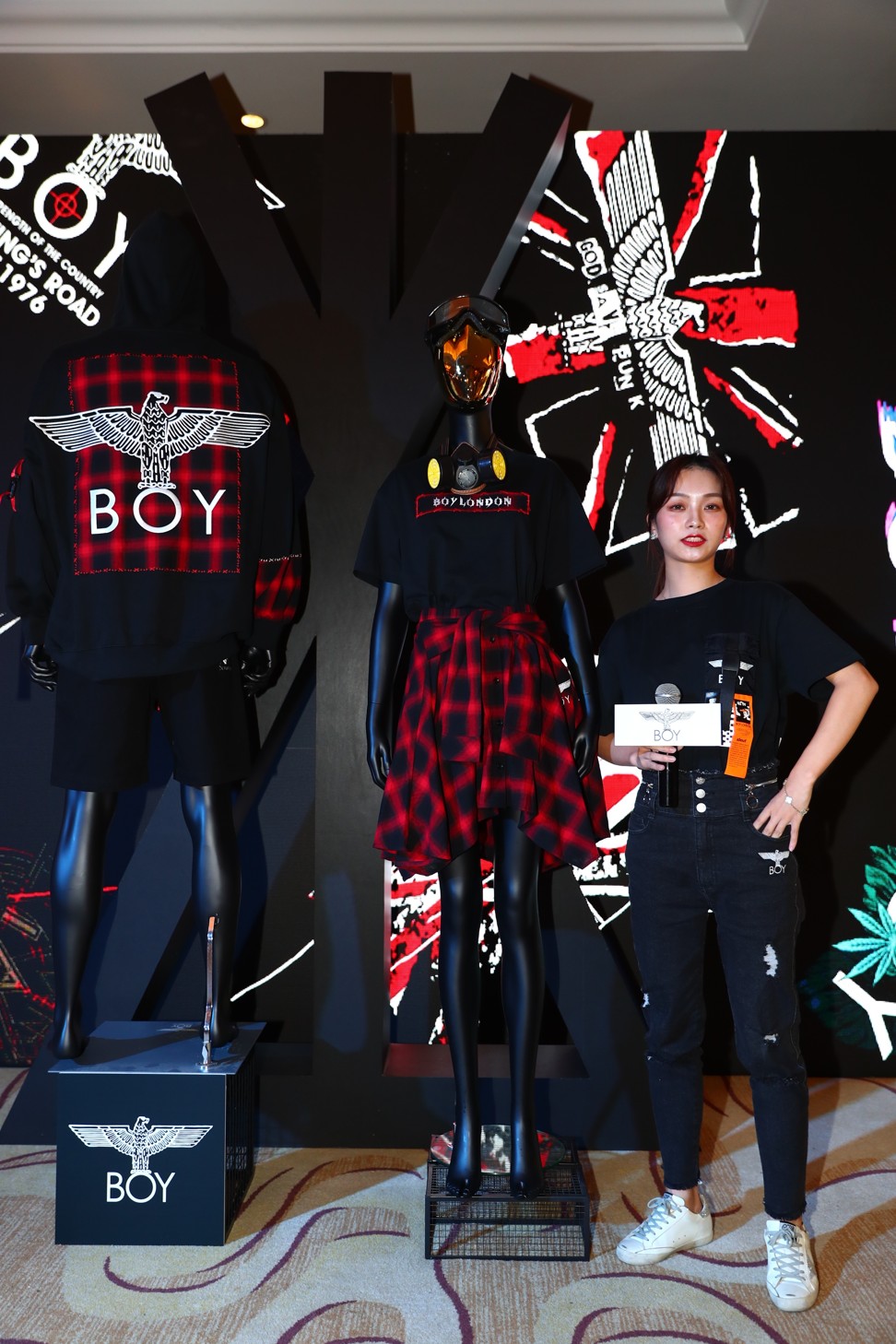
How UK streetwear brand Boy London beat China’s copycats and is finally booming in the country
- Boy London saw its rise in the days of UK punk and counted among its fans people like Andy Warhol and Boy George
- Having finally resolved its IP issues in China, the brand wants to grow in the country and Asia by appealing to more women and younger shoppers
More than four decades after it first emerged from the depths of the UK punk scene, Boy London is witnessing a rebirth.
This time, though, the brand – sported in years past by people including Boy George, Andy Warhol and Sid Vicious – is not showing up in underground music venues. Instead, it is becoming a fixture in China’s trendiest cafes and shopping malls where floods of cosmopolitan, streetwear-obsessed youth have picked it up.
The story of how Boy London arrived there from its start on King’s Road in 1976 is one that involves the rapid rise of streetwear and Japanese influence, plus a mix of hard work, social media and the stars aligning.
But its growth also underlines the ongoing complications with intellectual property rights that fashion brands face when expanding to China. For a long time before January last year, the Boy London brand that seemed to dominate the wardrobes of Chinese hypebeasts wasn’t even the real Boy London. And neither were the hundreds of other Boy London copycats.

Peter Caplowe, co-founder of retail consultancy firm Entrepot Asia, runs two Boy London stores in Macau casinos. He says he first discovered the brand’s copycat problem when he started working with Joseph Woo, CEO of the real Boy London, at a trade show during Shanghai Fashion Week in 2015.
Caplowe explains that Woo got involved in the company in its early years, when it was run solely by its founder Stephane Raynor. “Joseph went to London at age 17 in the ’70s and was working in markets in Camden and on Carnaby Street and doing jewellery collections for market stalls,” he says. “He’s very much made his way up the hard way in the UK fashion industry, and he was supplying a lot of people – including Stephane at Boy London – with his jewellery and watches.”
Why Chinese Hypebeast founder thinks next global streetwear wave will begin in China
Woo began taking over day-to-day management of Boy London in the early ’90s. At the same time, Japanese buyers started to take a major interest, helping to kick-start its expansion in Asia. Woo set up a licensing agreement with Hong Kong-based businessman James Yau, who set up Boy London HK, which operated 36 franchise shops. Fashion retailers like D-Mop were also instrumental in helping to bring Boy London to Hong Kong.
Fast-forward more than 20 years and the brand is stocked in 400 stores across Asia. But in the midst of it all, opportunists across the continent also tried to claim the Boy London brand for themselves.
“They jumped on the bandwagon at a stage when things were quieter for Joseph, and they basically were just registering the brand everywhere around Asia,” Caplowe says.

Luckily, Woo registered the Boy London trademark in mainland China in 1997. But it was not until January last year that he finally won the market back, in a case that was a “crucial turning point” for the brand. Following a triumphant trademark hearing, the team travelled around the country to close the fake stores and focus on educating consumers.
“In terms of convincing people that they weren’t [wearing] the real Boy London and we are the real Boy London, obviously it was challenging for us,” Caplowe says. “They definitely want to be wearing the real product.”
“No exaggeration, probably 95 per cent of the brands that I have dealings with from either side have trademark issues – someone has basically registered their trademark already before they even get a chance to start in China,” says Caplowe, who also launched Japan’s Evisu brand in 2000 and advises brands on entering and expanding in China.
“The IP situation, particularly for streetwear brands which by their nature are set up as independent, fairly undercapitalised businesses that aren’t going to have a legal department ready to get them an IP portfolio, is a real problem,” he adds. “Other streetwear brands just literally can’t get into the market. They’re very strong in the US and there are parties in China lined up ready to open doors for them, but somebody else has got their trademark.”
Despite other ongoing trademark disputes, Boy London has received a number of marketing boosts in recent years: including from Rihanna, who wore head-to-toe Boy London on Jonathan Ross’ UK talk show in 2012, and Hong Kong-based pop star G.E.M.
But Caplowe chalks most of the brand’s success – “massive, massive growth in the last two to three years”, with around 300 stores in China – to the dramatic evolution of streetwear.
“It’s pretty much swept everything else out,” Caplowe says. “Even luxury brands like Gucci and Balenciaga that are doing well, it’s because they’ve created streetwear-influenced fashion. But it’s very much a streetwear-dominated market now and yes, that has been very, very helpful for Boy London.”



Now the brand’s team is focused on appealing to more women and creating collections aimed at a younger clientele under a new line called Boy by Boy. The collections are inspired by the brand’s connections with the London clubbing scene going back to 1978 – club promoter Philip Sallon worked in the original store, while Raynor worked with pop singer Steve Strange on another project that year.
In recent years, the brand has seen an uptick in domestic tourists from provincial areas in China buying Boy London in Beijing and Shanghai as the locals cycle through what’s hot.
“Every few years we have to give them something new to get excited about, so we see Boy by Boy playing a part of that,” Caplowe says.

He adds that they hope to fuel more excitement for the brand by looking once again to London for creative collaborations that will feed back into Japan and the rest of Asia. “Rather than just looking to do work directly with KOLs in China, we want to replicate how we originally went into the market,” he says.
It is a move that has the potential to further establish brand heritage and authenticity amid an ongoing battle against copycats. For now, Caplowe is optimistic.
“We’re watching the market very closely,” he says. “But as of now, any Boy London store you see in China will be the real thing.”

